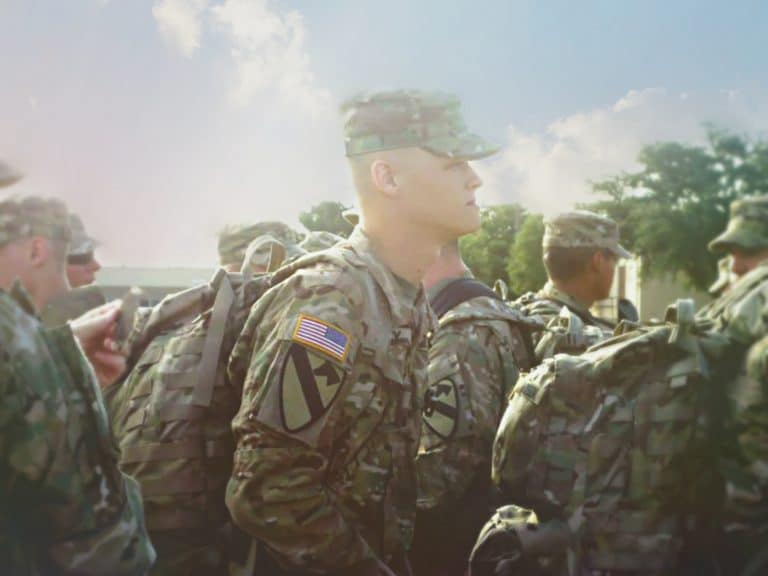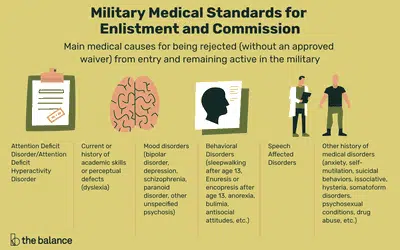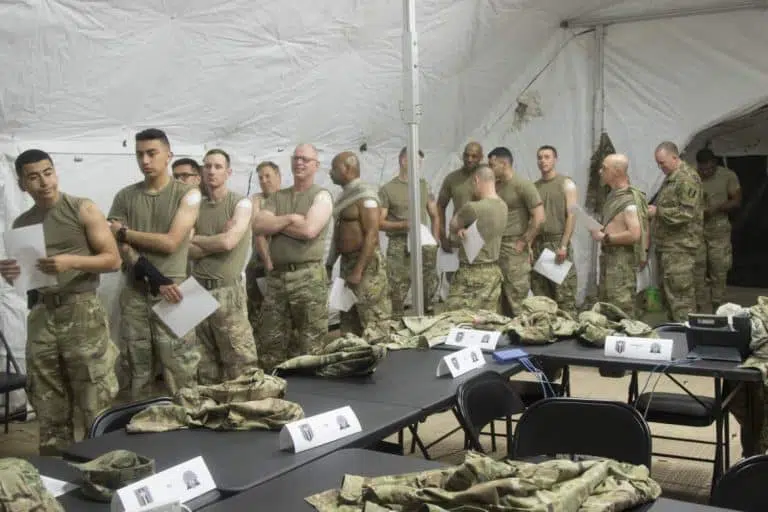What Is The Army Tattoo Policy? Is It Changing?
Important Note: When you buy through our links, we may earn a commission. As an Amazon Associate we earn from qualifying purchases. Content, pricing, offers and availability are subject to change at any time - more info.
Although tattoos in the military can be dated back to its inception, in 1925, approximately 90% of U.S. Navy sailors were tattooed; the Army has remained entrenched in its strict rules and regulations regarding them up until recently. Let’s see how things have changed.
The Army allows soldiers to have tattoos that can cover their arms and legs. As of June 2022, it also allows one 1-inch visible tattoo per hand, an unlimited amount of tattoos between the fingers, a ring tattoo, a 2-inch tattoo on the back of the neck, and one 1-inch tattoo behind the ear.
This article will detail everything that a potential new recruit or current service member needs to understand regarding the Army’s updated tattoo policy as of 2022. It will cover where tattoos are allowed, as well as what types of tattoos are acceptable. Read on to find out everything you need to know.
What Is The Army Tattoo Policy? Is It Changing?
As of October 29th, 2021, the military’s policy (including the Army) was that enlisted service members were only allowed to have tattoos that covered the entire arm (sleeve tattoos) or legs, as well as being permitted to have four visible tattoos while in uniform.
However, this policy was revised in June 2022, and many suspect it is due to a dropping number of potential recruits that are wanting to enlist. According to a report, the Pentagon announced that military recruitment was universally down by 23%.
In the midst of this slump, the Army seems to have updated its policy to hopefully, bolster its forces. The new tattoo policy includes a number of small changes, but they are significant ones (which we will detail).
Why Is The Army Changing Its Tattoo Policy?
As we touched on, one of the primary causes that seems to be fueling this current development is the falling national number of individuals signing up to enlist.
According to the assistant deputy for recruiting and retention, Linden St. Clair, in 2020, approximately 1,400 potential recruits needed to approach the Army with waiver requests to serve. Out of those 1,400 recruits, only 1,100 were approved.
Consider that the process of the Army confirming the waiver and allowing a new recruit to join can take up to a week or more. According to Sgt Maj. Ashley Sykes, this inevitably slows down the process of enlisting new service members and gives way to the potential jeopardy that these individuals may change their minds.
Additionally, Maj Sykes goes on to say that “the new tattoo policy of having a 1-inch tattoo on the hand or one on the neck won’t stop the readiness of the military.”. Moreover, “it will not negatively impact good order nor discipline.”.
Besides Tattoos, What Else Is The Army Doing To Get Recruits?
Linden St. Clair said that in addition to tattoos, the Pentagon was also reviewing the current medical requirements for individuals that wanted to join the Army. “The office of the Secretary of Defense is now running a few pilot programs on medical conditions.”. This is because, in the past, medical conditions such as ADHD (attention-deficit/hyperactivity disorder) were grounds for disqualification for potential enlistees.
He went on to say that the military service has recognized that children, society, medical technology, and treatments have evolved, and perhaps the previous standards were no longer applicable, practical, and should apply.
Hence, the military is looking to shrink timelines or histories of specific medical conditions that would have previously disqualified new recruits.
In addition to waiving and overlooking some medical conditions, the Army is also offering a six-year active duty enlistment sign-on bonus of up to $50,000.
What Is The New Army Tattoo Policy?
The last revision to the Army’s tattoo policy was conducted in 2015, and as we discussed, this allowed service members to have as many tattoos of any size on their arms and legs, although tattoos were still not allowed above the neckline, on their wrists, or hands. Remember that the maximum amount of visible tattoos while in uniform was limited to four.
Breaking it down, the Army will now allow soldiers to have a 1-inch visible tattoo per hand, an unlimited amount of tattoos between their fingers (not visible), a ring tattoo, a 2-inch tattoo on the back of their neck, and a 1-inch tattoo behind the ear. Here it is in bullet form;
- One 1-inch visible tattoo per hand
- An unlimited amount of tattoos between the fingers that are not visible
- A ring tattoo on each hand
- One 2-inch tattoo on the back of the neck
- One 1-inch tattoo behind the ear
The new policy applies to the following branches of the Army;
- Regular Army
- Army National Guard/Army National Guard of the United States
- U.S. Army reserve
New Army Tattoo Policy Details
Although we outlined the new tattoo policy above, strict rules and requirements still have to be met if soldiers are looking to get inked up. Let’s discuss them now.
Army Tattoos On The Hands
Soldiers are allowed one tattoo on each hand, but this also includes the palms. This means that soldiers can choose to have either one tattoo on the palm or the dorsal side of the hand (where the knuckles are). Furthermore, each tattoo must not exceed 1-inch in all directions.
In addition to having one tattoo on each hand (either on the dorsal section of the palm), soldiers may have unlimited tattoos between the fingers. However, this is only permitted if the tattoos are not visible when the fingers are closed.
Lastly, soldiers are allowed to have one ring tattoo on each hand. There is no restriction to the size and color of the ring tattoo as long as it stays between the knuckle and first joint.
Suppose you are wondering what the deal is with ring tattoos. In that case, soldiers typically get them as a symbol of wedlock because even though they are allowed to wear a wristwatch, identification bracelet, and a total of two rings, many opt not to wear their wedding bands during deployment.
Army Tattoos Above The Neckline
Soldiers may have one tattoo on the back of the neck, although it must not exceed 2 inches in all directions. Take note that tattoos on the face and head are still prohibited. There is an exception to this regarding permanent makeup of the inside of the eyelids, the mouth, and the ears.
Additionally, soldiers may also have one tattoo behind each ear. These must not exceed 1-inch in measurement in all directions, and they may also not extend forward past the ear lobe.
Consider that previously documented tattoos of the neck and hand that soldiers have a tattoo validation memorandum will still remain authorized.
What Content Is Prohibited In Military (Army) Tattoos?
All five branches of the military (including the Army) restrict tattoo content, and new recruits and long-time service members should consider what is allowed before jumping the gun and getting some new ink.
No tattoos based on specific content are not permitted, and if a potential enlistee has such content in any of their tattoos, they will need to have them changed or removed before they will be allowed to enroll.
Tattoos based on the following are not permitted;
- Sex
- Drugs
- Violence
- Gang affiliation
In addition to that, tattoos that discriminate based on the following content are not allowed;
- Sex (gender)
- Religion
- Race (color of the skin)
Are Tattoos In The Army A Pro Or A Con?
We discovered that with each passing year, all branches of the military (the Army included) are becoming laxer when it comes to body cosmetics (tattoos), and they have even implemented pilot medical programs to allow new potential recruits to enlist that would previously have seen them disqualified.
Most individuals will and have regarded the change in policy to be positive and welcomed it with open arms.






